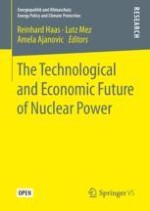This open access book discusses the eroding economics of nuclear power for electricity generation as well as technical, legal, and political acceptance issues. The use of nuclear power for electricity generation is still a heavily disputed issue. Aside from technical risks, safety issues, and the unsolved problem of nuclear waste disposal, the economic performance is currently a major barrier. In recent years, the costs have skyrocketed especially in the European countries and North America. At the same time, the costs of alternatives such as photovoltaics and wind power have significantly decreased.
